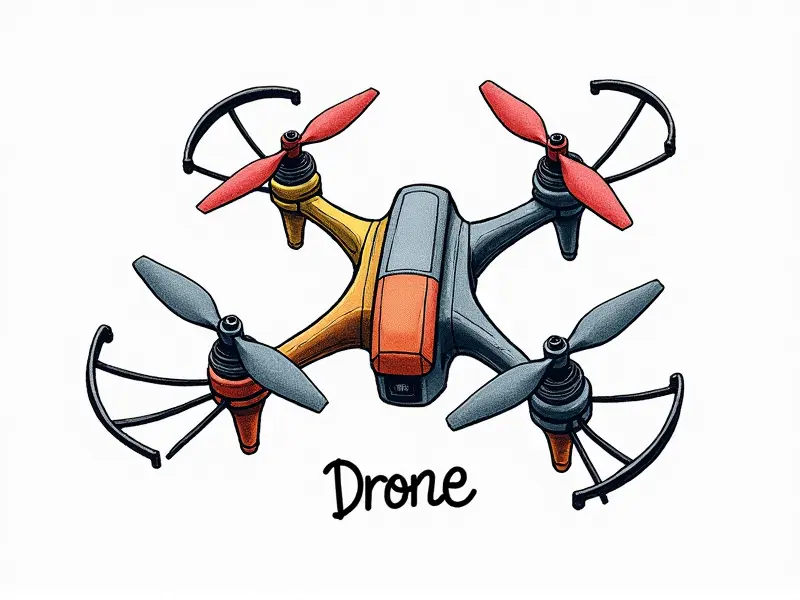Does DJI Phantom have autopilot?

Understanding DJI Phantom's Auto Flight Modes
DJI Phantom drones are renowned for their advanced flight modes that enhance the user experience and simplify aerial photography and videography. These auto flight modes include features such as waypoint navigation, follow-me mode, and more. However, one crucial question often arises: does the DJI Phantom come equipped with an autopilot system?
Discovering DJI Phantom's Autopilot Capabilities
To understand whether DJI Phantom drones have autopilot capabilities, it is essential to delve into what these features entail. Autopilot systems in drones are designed to automate various aspects of flight control, including takeoff, landing, and navigation.
Is Autopilot Available in DJI Phantom?
The answer isn't straightforward as DJI Phantom models vary widely in terms of their technology and features. While some older models may not offer full autopilot functionality, newer iterations like the Phantom 4 Pro and beyond do incorporate advanced flight modes that can be considered akin to an autopilot system.
Autopilot Capabilities by Model
- DJI Phantom 3: Offers basic features such as waypoint navigation but lacks full autopilot capabilities.
- DJI Phantom 4: Introduces intelligent flight modes like ActiveTrack and QuickShot, which are steps towards advanced automation.
- DJI Phantom 4 Pro/Pro+: Features a robust set of intelligent flight modes including Waypoint, Follow Me, and more. These modes provide significant autonomy in flight control.
How Reliable is DJI Phantom's Autopilot?
The reliability of the autopilot system in DJI Phantom drones depends on several factors, including model specifics, firmware updates, and environmental conditions. Generally, newer models like the Phantom 4 Pro offer highly reliable autopilot features due to advanced sensors and robust software.
Factors Affecting Autopilot Reliability
- Firmware Updates: Regularly updating firmware ensures access to the latest improvements in flight control algorithms.
- Sensor Accuracy: High-quality sensors contribute significantly to accurate and reliable navigation.
- User Experience: Proper calibration of sensors and understanding of flight modes are crucial for optimal performance.
The Role of Autopilot in DJI Phantom
The role of autopilot in DJI Phantom drones is to enhance user convenience, improve safety, and enable more sophisticated aerial operations. It allows users to focus on capturing high-quality footage while the drone handles complex maneuvers autonomously.
Autopilot Enhancements
- Safety: Autopilot features like automatic return-to-home ensure drones can safely navigate back to their starting point if communication is lost or battery levels drop.
- Efficiency: Features such as Waypoint navigation allow for efficient coverage of large areas without manual intervention.
Benefits of Autopilot on DJI Phantom Drone
The benefits of autopilot in DJI Phantom drones are numerous. They include improved flight stability, enhanced user experience, and the ability to capture high-quality footage with minimal effort.
Enhanced User Experience
- Simplified Operation: Users can set up complex flights using intuitive interfaces, reducing the learning curve for advanced features.
- Increased Flexibility: Autopilot allows users to capture footage from angles and perspectives that would be difficult or impossible with manual control alone.
Setting Up Autopilot for Your DJI Phantom
To set up autopilot features on your DJI Phantom, follow these steps:
- Update Firmware: Ensure that your drone's firmware is up-to-date to access the latest flight modes.
- Calibrate Sensors: Properly calibrating sensors like GPS and compass ensures accurate navigation.
- Configure Flight Modes: Use the DJI GO app to set up intelligent flight modes such as Waypoint, Follow Me, etc.
Essential Tips for Using Autopilot in DJI Phantom
To maximize the benefits of autopilot on your DJI Phantom drone, consider these tips:
- Familiarize Yourself with Flight Modes: Understand the capabilities and limitations of each flight mode.
- Practice in Controlled Environments: Start by testing autopilot features in open areas before moving to more complex settings.
- Maintain Communication: Keep your remote control connected for safety and to monitor the drone's status during autonomous flights.
Comparing Autopilot Features in DJI Phantom Models
Different models of DJI Phantom offer varying levels of autopilot capabilities. Here’s a comparison:
| Model | Autopilot Capabilities |
|---|---|
| Phantom 3 | BASIC AUTONOMY (WAYPOINT NAVIGATION) |
| Phantom 4 | SMART AUTONOMY (ACTIVE TRACK, QUICKSHOT) |
| Phantom 4 Pro/Pro+ | ADVANCED AUTONOMY (WAYPOINT, FOLLOW ME, MORE) |
How Does Autopilot Work in DJI Phantom?
The autopilot system in DJI Phantom drones works through a combination of advanced sensors and sophisticated software. GPS, compass, ultrasonic rangefinders, and other onboard sensors provide real-time data about the drone's position and environment.
Key Components
- Sensors: Collect environmental data to ensure accurate navigation.
- Firmware: Contains algorithms that interpret sensor data and control flight dynamics.
- User Interface: Allows users to configure and monitor autopilot settings through the DJI GO app.
Exploring Autopilot Capabilities in DJI Phantom
The latest models of DJI Phantom drones offer a range of advanced autopilot features that go beyond basic navigation. These include intelligent flight modes like Follow Me, which tracks subjects automatically; and Waypoint, which allows for pre-programmed flights over specific routes.
Advanced Features
- FlyHome: Automatically returns the drone to its starting point if communication is lost or battery levels drop.
- Safety Zones: Prevents unauthorized flights in restricted areas based on GPS coordinates.
Conclusion
The integration of autopilot features into DJI Phantom drones has revolutionized aerial photography and videography. By leveraging advanced technology, users can achieve professional-grade results with ease and safety.

